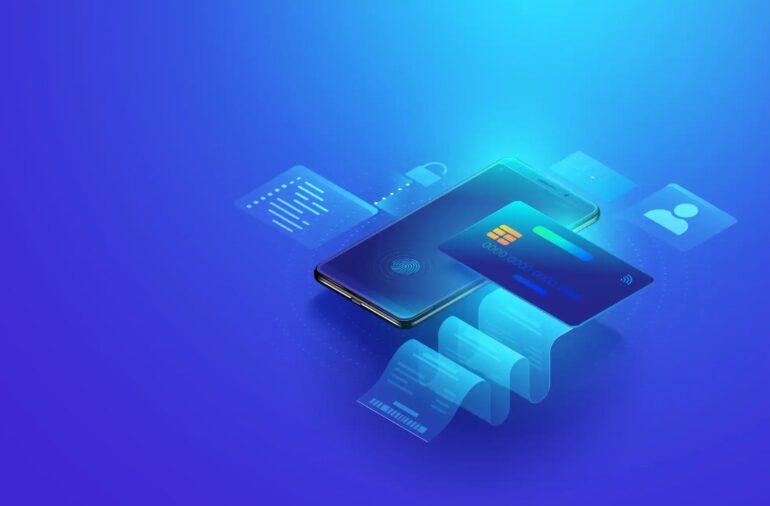
In today’s fast-paced world, where convenience reigns supreme, the way we pay for goods and services is undergoing a remarkable transformation. Gone are the days of fumbling for cash or swiping a card; instead, a simple tap or wave of a smartphone or card is all it takes to complete a transaction.
As contactless payment on phone continues to gain popularity, it begs the question: Will they emerge as the ultimate victor in the payment method race? Let’s delve into the intricacies of various payment methods and explore why contactless might just be poised to take the lead.
The Evolution of Payment Methods
To understand the significance of contactless payment, it’s essential to trace the evolution of payment methods over time. From the barter system of ancient civilizations to the advent of coins and paper currency, humanity has continuously sought more efficient ways to exchange value. The invention of credit and debit cards revolutionized commerce by enabling electronic transactions, but even these methods have evolved.
Enter the era of contactless payment, where a simple tap or wave of a card or smartphone suffices to complete a transaction. This technology utilizes radio-frequency identification (RFID) or near-field communication (NFC) to transmit payment information securely between a payment device and a terminal.
The ease and speed of contactless payments have propelled them to the forefront of modern commerce, challenging traditional payment methods on multiple fronts.
The Battle of Payment Methods

In the realm of payment methods, competition is fierce. Cash, credit cards, debit cards, mobile wallets, and cryptocurrencies each have their strengths and weaknesses. Cash, though universally accepted, is becoming increasingly obsolete in an era dominated by digital transactions.
Credit and debit cards offer convenience and security but require physical interaction with a terminal. Mobile wallets, such as Apple Pay and Google Pay, promise seamless transactions through smartphones but require adoption by merchants and consumers alike. Cryptocurrencies, while gaining traction, still face challenges in mainstream acceptance and regulatory hurdles.
Amidst this diverse landscape, contactless payment methods have emerged as a formidable contender. With their blend of convenience, security, and speed, they offer a compelling alternative to traditional payment methods. Let’s explore why contactless payment could have the edge in the race for supremacy.
Convenience ─ The Key to Consumer Adoption
One of the primary reasons driving the popularity of contactless payment is its unparalleled convenience. In today’s fast-paced world, where time is of the essence, consumers seek frictionless experiences that streamline their daily routines.
With contactless payment, gone are the days of fumbling for cash or inserting a card into a terminal. A simple tap or wave is all it takes to complete a transaction, making the checkout process swift and hassle-free.
Moreover, contactless payment eliminates the need for physical contact with payment terminals, reducing the risk of germ transmission—a particularly crucial consideration in the wake of the COVID-19 pandemic. This added layer of hygiene further enhances the appeal of contactless payment, particularly in environments where health and safety are paramount.
Security ─ Fortifying Transactions Against Threats

In addition to convenience, security is a paramount concern for both consumers and merchants alike. Traditional payment methods, such as magnetic stripe cards, are susceptible to fraud and unauthorized transactions. However, contactless payment methods employ advanced encryption and tokenization technologies to safeguard sensitive payment information.
Furthermore, contactless transactions require authentication measures such as biometric verification (e.g., fingerprint or facial recognition) or PIN entry, adding an extra layer of security. This multi-factor authentication enhances the integrity of transactions, mitigating the risk of fraud and instilling confidence in consumers.
Speed ─ Accelerating the Pace of Commerce
In today’s hyperconnected world, where every second counts, speed is of the essence. Contactless payment methods excel in this regard, offering swift and seamless transactions that minimize wait times at checkout counters. With a simple tap or wave, payment is processed instantaneously, allowing consumers to complete their purchases with minimal interruption to their busy schedules.
From bustling retail stores to crowded transit systems, the speed of contactless payment facilitates efficient throughput, enabling businesses to serve more customers in less time. This increased efficiency translates into higher customer satisfaction and enhanced operational productivity—a win-win scenario for merchants and consumers alike.
Versatility ─ Adapting to Diverse Needs

Another key advantage of contactless payment methods is their versatility. Whether it’s a contactless-enabled card, smartphone, smartwatch, or wearable device, consumers have a myriad of options to choose from when making payments. This versatility extends to various payment scenarios, from retail purchases and dining experiences to transportation fares and vending machine transactions.
Moreover, contactless payment technology continues to evolve, paving the way for innovative applications such as biometric payments, voice-activated transactions, and Internet of Things (IoT) integration. As the boundaries of contactless payment expand, so too does its potential to revolutionize the way we interact with money in an increasingly digital world.
Accessibility ─ Bridging the Digital Divide
While the rise of contactless payment heralds a new era of convenience and efficiency, it’s essential to address accessibility concerns. Not everyone has access to smartphones, bank accounts, or reliable internet connections, underscoring the importance of inclusive payment solutions that cater to diverse socioeconomic backgrounds.
Efforts to democratize access to contactless payment technology, such as government initiatives, financial literacy programs, and partnerships with community organizations, are crucial in bridging the digital divide. By ensuring that contactless payment solutions are accessible to all segments of society, we can empower individuals to participate fully in the digital economy and reap the benefits of technological innovation.
